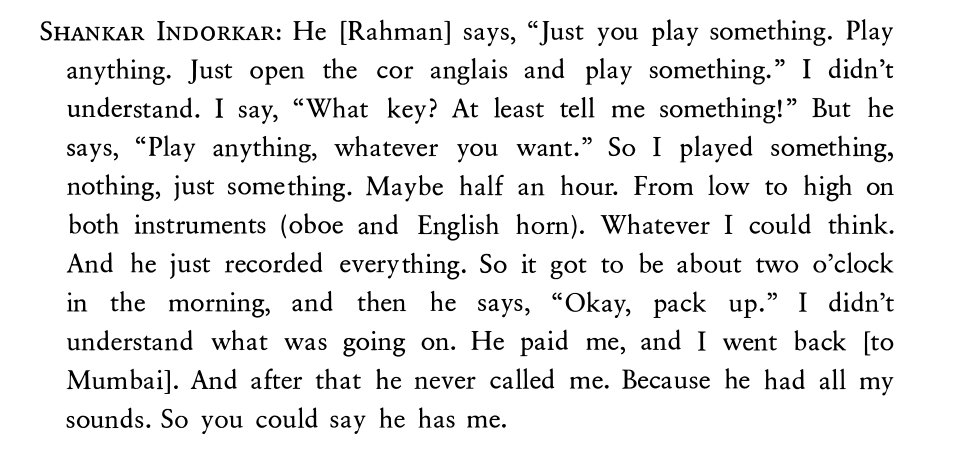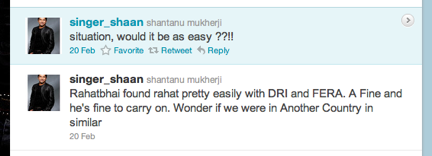Music composer Kaushal Inamdar recently posted an insightful Twitter thread about how film music had changed in recent decades. The crux of the point he made was that technological advances in music production had shifted the focus of music directors from music composition to sound design. He argued that creating interesting sounds was becoming more important than creating beautiful compositions. The singer’s voice, which traditionally delivered the main melody in film songs, had become just another element in the sound the composers were looking to create. As Inamdar described it – “More and more singers sang less and less”.
A few years ago. I had talked about these concepts a little bit while comparing the music of the films “Raanjhanaa” (2013) and “Lootera” (2013). I had found A.R. Rahman’s music for “Raanjhanaa” (2013) to be more textured and intricate but had enjoyed Amit Trivedi’s “Lootera” (2013) more since it was more melodic and hummable. To borrow Inamdar’s words, while “Raanjhanaa” (2013) had more interesting sounds, the composition was better in “Lootera” (2013). For me, “Lootera” (2013) has stood the test of time significantly better than “Raanjhanaa” (2013).
The shift from a melody-centric to a sound-centric music-making process was enabled by technological advancements in music production. Synthesizers and software programs made it easy for music directors to create new sounds (even those mimicking live musical instruments, like the sarod in “Mitwa” (“Kabhi Alvida Naa Kehna”, 2006)), use newly recorded or pre-recorded samples and loops, and manipulate and assemble them into a song. Recording songs live in a studio with singers and session musicians coming together became obsolete. Composers increasingly channeled their creativity in creating catchy hooks and danceable rhythms that drew listeners in. Melody – the crucial element of film songs that creates a lasting impact – took a back seat. Music production became less organic and reminiscent of assembly-line productions.
The use of technology to improve the sound of film music is not a new phenomenon. The celebrated “Been” theme of “Nagin” (1954) created by Kalyanji Virji Shah (of Kalyanji – Anandji) on a keyboard instrument called clavioline is among the earliest uses of electronic music in Hindi films. Kalyanji – Anandji (and their brother Babla) went on to push the boundaries of film music with their use of synthesizers. The use of the mini Korg synthesizer in “Yeh Mera Dil Yaar Ka Deewana” (“Don”, 1977) was a significant milestone and made electronic instruments more popular than ever before. R.D. Burman was another music director who embraced technological innovations in music production. His efforts to use technology to improve the sound quality of his recordings set him apart from his peers.
However, the biggest technological shift in music production happened in the 1990s with the rise of A.R. Rahman. As sessions musician Shankar Indorkar points out in Gregory Booth’s book “Behind the Curtain: Making Music in Mumbai’s Film Studios” – “He’s the one who changed [the sound and the production process of film music] because if you see Roja [1993], there’s hardly any acoustic instrument and hardly any Indian instrument also. And that was his first picture.”. Rahman’s pioneering use of sampling in music production was poignantly described by Indorkar through a personal experience:

It is important to note that Rahman himself cannot be held responsible for the erosion of melody from film music. While his sound design gave him an edge, his biggest strength was always his ability to create exquisite melodies. Lesser composers could emulate Rahman’s use of technology to produce music but could not match his music-making genius. Technology became a crutch for them. The changing tastes of music listeners also caused sound design to be prioritized over melody. As attention spans of music listeners reduced, the demand for instant gratification increased, leading to the proliferation of songs with repetitive and catchy hooks. In the 2010s, as songs started losing their place as storytelling devices in films, melodies were replaced by dance numbers that could be used to promote the film. The rise of hip-hop also served to extricate melody from Hindi film songs.
A.R. Rahman himself lamented about the disappearance of melody from film songs in a 2014 interview. On being asked to comment about Amit Trivedi and Sneha Khanwalkar as “offshoots of the ARR movement”, the maestro said – “They have their own sound, I like what they do but it’s also important to have that classic film melody in your repertoire. That’s missing nowadays, which is sad. Like something Laxminkant-Pyarelal employed or what Nadeem-Shravan did. The bread and butter songs.
While melody has been the soul of Hindi film music since its inception, it cannot necessarily be equated with quality. Even the “classic” era of Hindi films had plenty of terrible songs. Also, musical genres like hip-hop and electronic music are not melodic but are enjoyed by millions of listeners across the globe. It follows that the loss of melody does not represent a loss of quality; it represents a change in the character of film music. There is no denying the fact that this shift is leaving many Hindi film music lovers disappointed. However, it can be argued that their disappointment stems not from the poor quality of today’s music as some of them claim but from a misalignment between their tastes and what’s on offer. While many melodic songs have been recorded in the past decade – “Phir Le Aaya Dil” (“Barfi!”, 2012), “Sawaar Loon” (“Lootera”, 2013), “Yeh Moh Moh Ke Dhaage” (“Dum Laga Ke Haisha”, 2015), “Agar Tum Saath Ho” (“Tamasha”, 2015), and “Ae Watan Watan Mere Aabad Rahe Tu” (“Raazi”, 2018) to name a few – there has also been an rising number of songs that may not be bad but are not very melodic, like “Chaar Baj Gaye Party Abhi Baaki Hai” (“F.A.L.T.U”, 2011), “Teri Keh Ke Loonga” (“Gangs Of Wasseypur”, 2012), “Abhi Toh Party Shuru Hui Hai” (“Khoobsurat”, 2014), “Kar Gayi Chull” (“Kapoor & Sons (Since 1921)”, 2016), “Aisi Dhaakad Hai Dhaakad Hai Aisi Dhaakad Hai” (“Dangal”, 2016), “Coca Cola” (“Luka Chuppi”, 2019), and the songs of “Gully Boy” (2019).
It remains to be seen if this shift is permanent or if melody stages a comeback at some point in the future. Also, will Hindi film music listeners warm up to this trend eventually or move on to greener pastures (non-Hindi film music or independent music)?
For more on this topic, check out this video:

